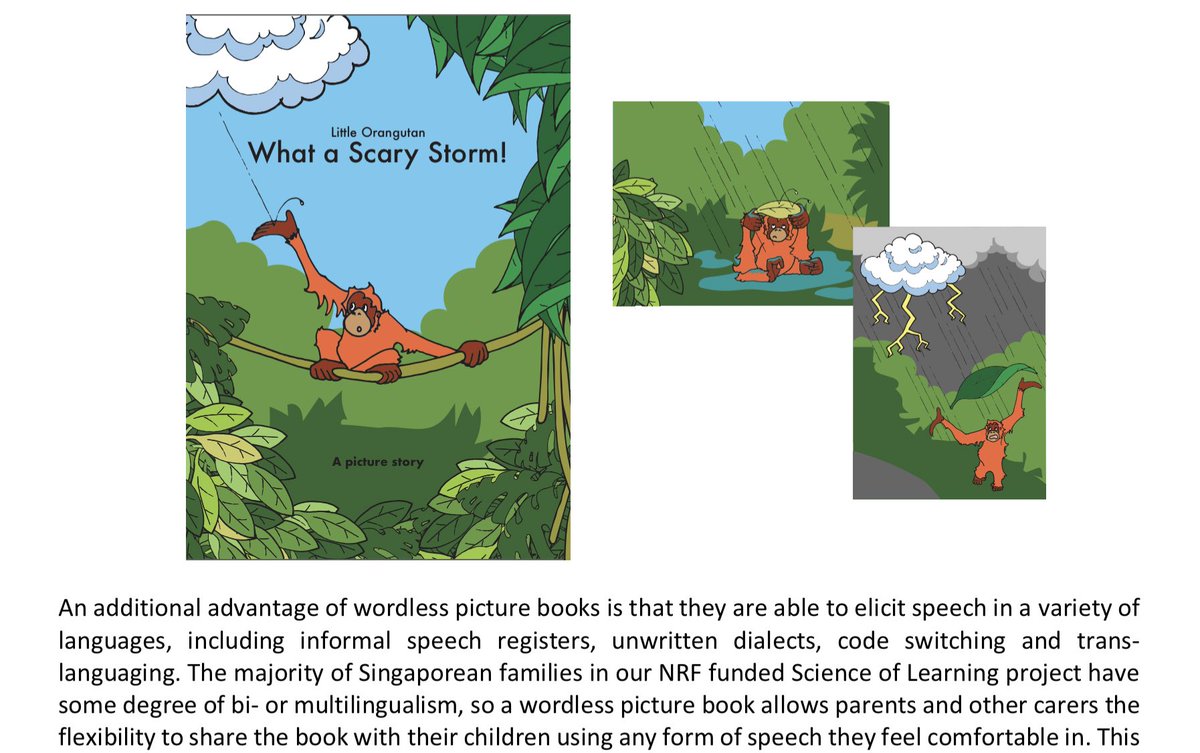#childlang friends!
Milestone:📣 @bliplab's ✨heroic✨ multilingual team have passed the 300 transcription mark!
We used an onscreen wordless strybookbook to collect over 400 parent-child conversations on video calls. Look at this amazing progress! T1 and T2 almost complete!
Milestone:📣 @bliplab's ✨heroic✨ multilingual team have passed the 300 transcription mark!
We used an onscreen wordless strybookbook to collect over 400 parent-child conversations on video calls. Look at this amazing progress! T1 and T2 almost complete!

@bliplab We described our #LockdownScience methods in this paper, where we talk about conducting the study online, and the strategies we used to keep our 142 parents engaged over the three time points (Retention rates: 96% to T2; 92% to T3). 💪🏼💪🏽💪🏾
frontiersin.org/articles/10.33…
frontiersin.org/articles/10.33…
@bliplab Our multilingual families in SG provide wonderful data about patterns of #translanguaging across the course of a story. In this example, you can see has lots of English at the start and end, and lots of Mandarin Chinese in the middle, but the pattern is constantly shifting. 

@bliplab To look at our data in this way, we've developed a special way of transcribing - a protocol and set of tools called BELA. The BELA transcriptions allow us to mark out bits of speech where the words originate in different languages, or have an unclear origin 🤔 

@bliplab Big thanks to Corpus all-star cast!
BLIPLab Manager: @FeitingW
BELA Program Lead: Le Tuan Anh
Corpus Manager: Victoria Chua
w/
Serafina Fong
Wong Jin Yin
@ShamalaSundaray
Eshwaaree Yogarrajah
Nur Sakinah Mohd Salleh
Shaza Amran
Annabel Loh
Vinitha Selvarajan
+ our team of 30 RAs!
BLIPLab Manager: @FeitingW
BELA Program Lead: Le Tuan Anh
Corpus Manager: Victoria Chua
w/
Serafina Fong
Wong Jin Yin
@ShamalaSundaray
Eshwaaree Yogarrajah
Nur Sakinah Mohd Salleh
Shaza Amran
Annabel Loh
Vinitha Selvarajan
+ our team of 30 RAs!
The wordless storybook was designed with #MultilingualismInMind
It is open access and free to download with CC-BY-NC 4.0 Licence 🎉
doi.org/10.21979/N9/MJ…
It is open access and free to download with CC-BY-NC 4.0 Licence 🎉
doi.org/10.21979/N9/MJ…

• • •
Missing some Tweet in this thread? You can try to
force a refresh















